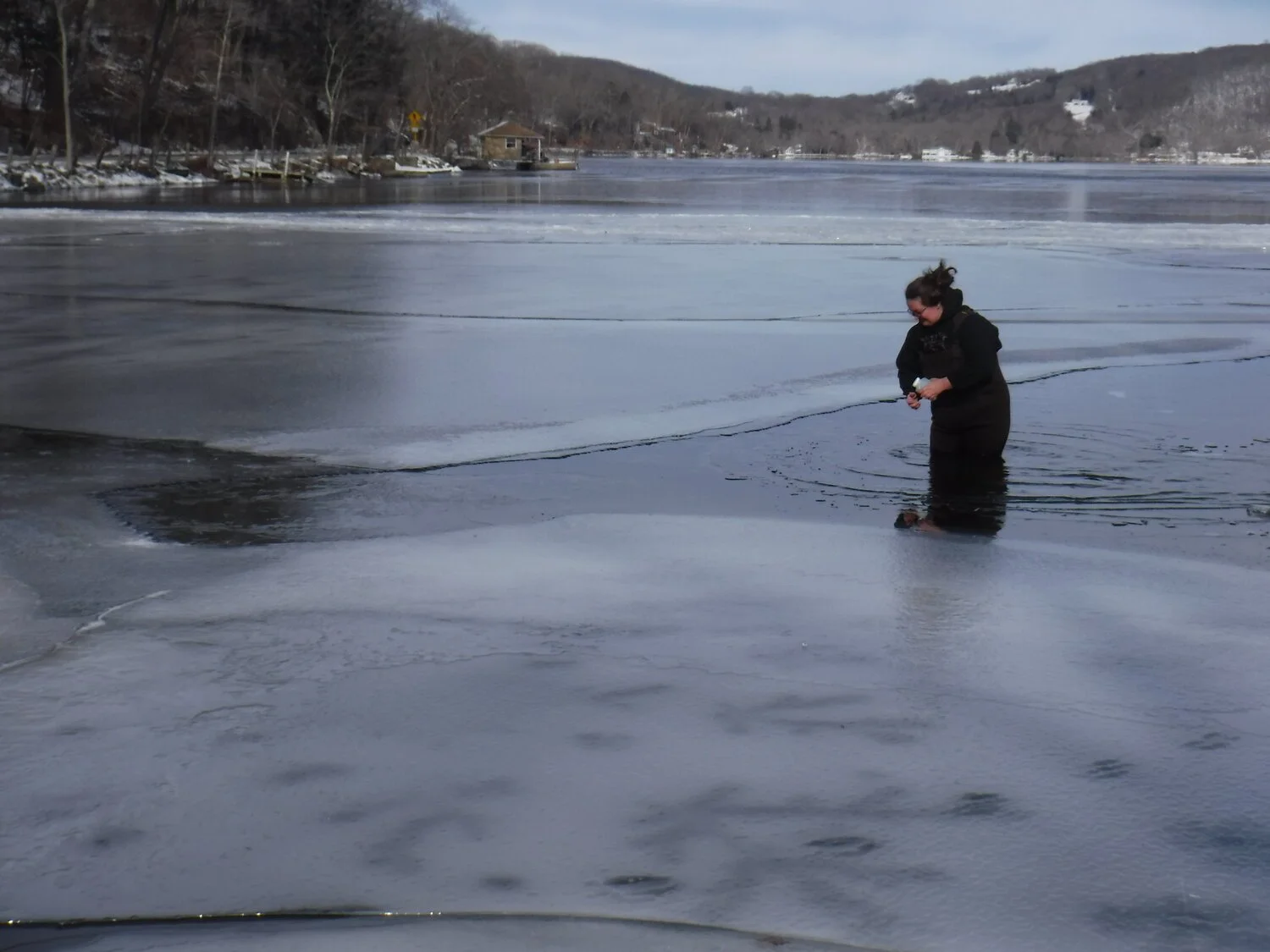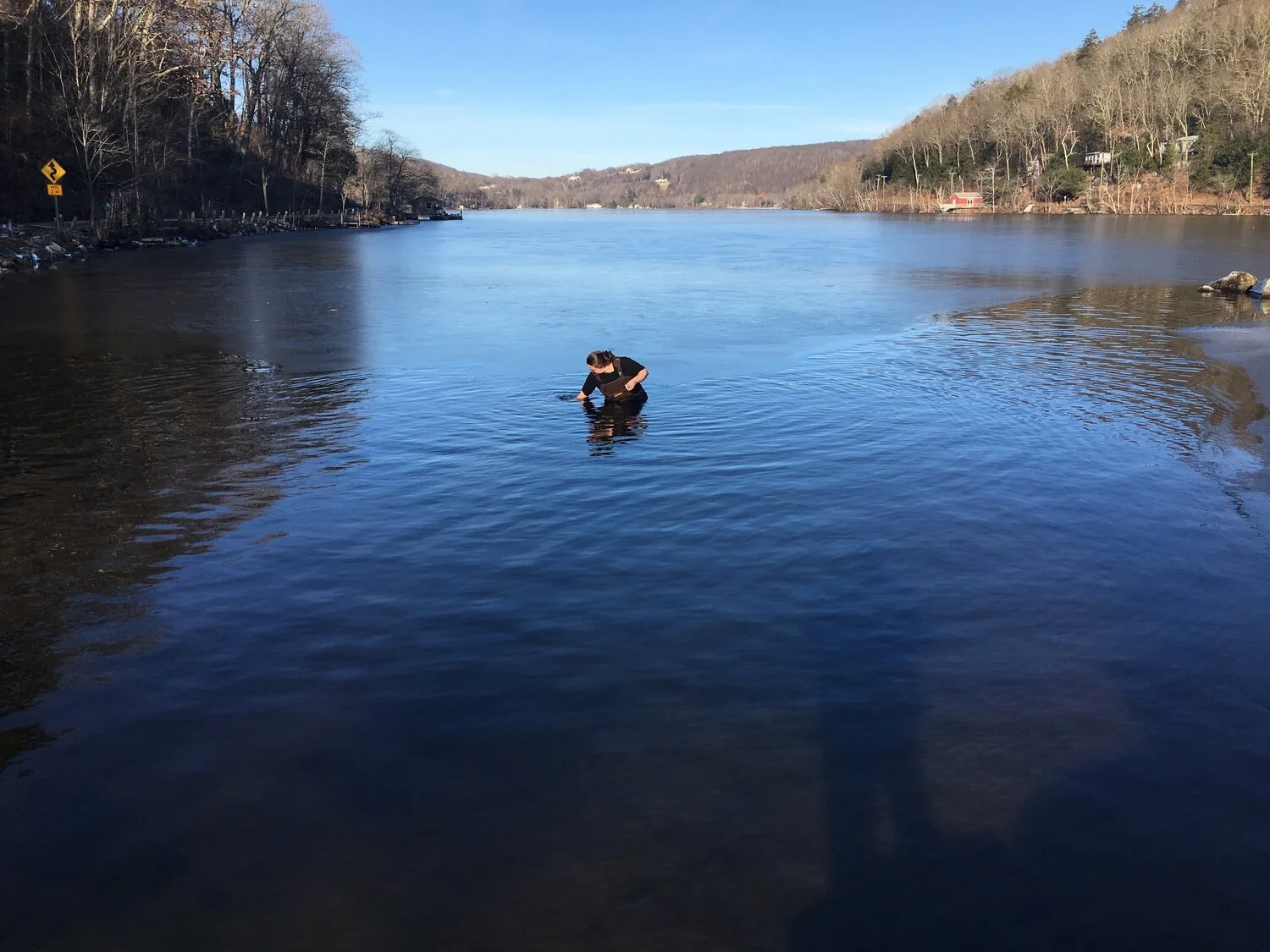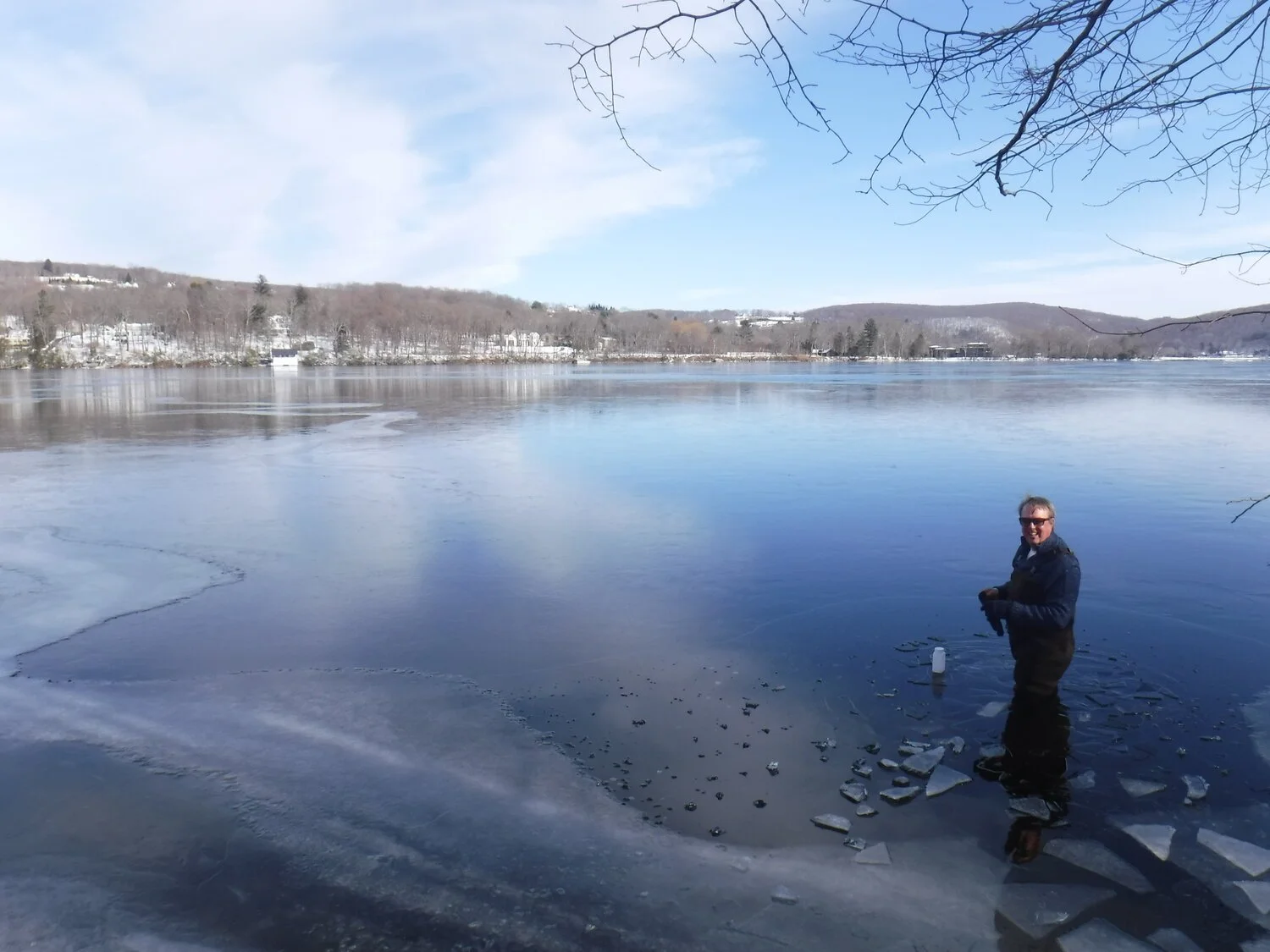Working around the calendar: water sampling & monitoring
We work throughout the year to keep Lake Waramaug clean, clear and swimmable. Even when ice covers the lake, there is water sampling and monitoring we can do to predict how the lake will behave in the following summer and fall.
One of the most important factors or parameters that we monitor is in-lake phosphorus concentrations. Phosphorus is a nutrient that is entrained in stormwater runoff from impervious surfaces and poor landscaping practices. Increased phosphorus pollution from the watershed can allow more photosynthetic activity in the lake. In other words, there is more potential for a lake to have blooms of toxic cyanobacteria or blue-green algae when there are elevated levels of phosphorus. Our main goal is to decrease the risk for cyanobacteria blooms in the lake—which can be toxic to pets and humans, degrade the natural environment, and potentially harm the local economy.
One of the ways that we monitor phosphorus in Waramaug is by taking a grab sample of the lake during the winter and spring (seen in the photos to the right), before the lake warms up. In the next few weeks, we will take one last spring phosphorous sample. This data combined with winter phosphorus sampling data will allow us to predict how the lake will behave this summer. The ‘magic’ threshold concentration for phosphorus is 20 parts per million. Lake concentrations above this threshold increase the risk of a lake having cyanobacteria blooms. By monitoring phosphorus and the lake even in the off-season, we’re able to understand how the lake is acting, and alter its management accordingly.
Written by: Kelsey Sudol, Research Assistant
March 31, 2020



